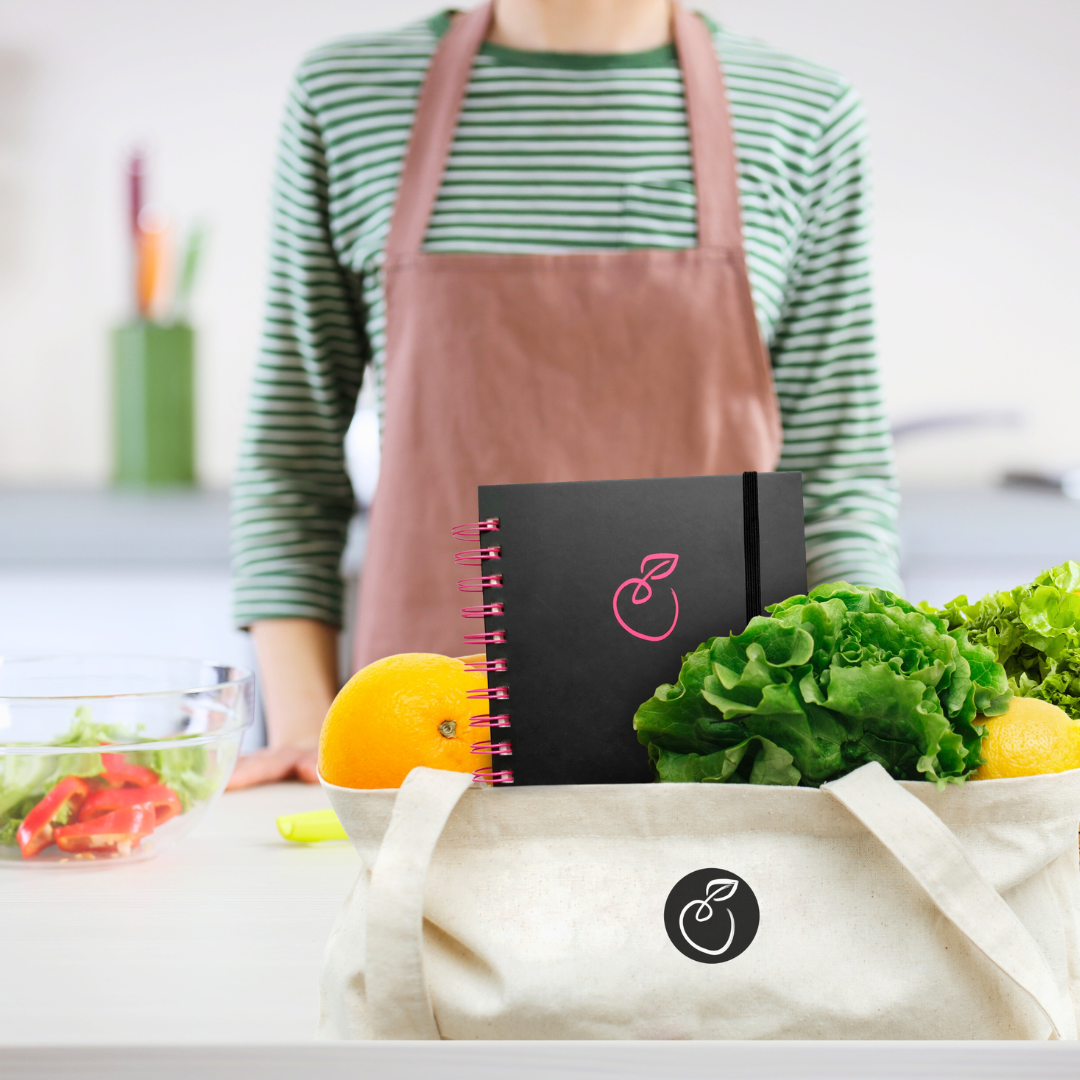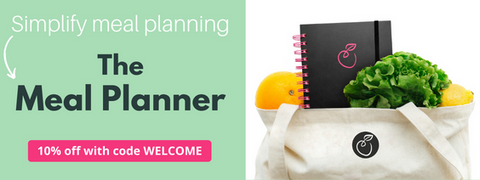Eating healthier seems to be a general, common goal to most people. I mean, do you know anyone who wouldn't like to eat healthier (kids and some teenagers excluded)? Still, our actual daily nutrition choices often don't align with this goal. Sometimes we don't have the time to cook a healthy meal, sometimes we're tempted to just eat at a nearby fast food joint, sometimes we don't have nutritious food readily available at home. The secret weapon to unlocking a healthy, balanced diet isn't a fad detox or a pricey superfood. It's as simple as... meal planning. Let's break down why meal planning is important for healthy eating, and how a meal planner can turn your nutrition goals from daunting to doable.
The Key Benefits of Meal Planning
Preventing Impulse Eating
One of the biggest hurdles to eating well is impulse eating, including but not limited to "cravings", as we all know too well. Who hasn't felt the pull of a sugary snack or a greasy takeaway? Here's where your meal planning notebook comes into play, helping you be ready for these impulsive I-gotta-have-something-sweet moments.
Picture this: it's Wednesday, the mid-point of the week, and your energy and willpower are waning. Instead of hitting the vending machine, you consult your meal planning notebook and find a tasty, nutritious snack you prepared earlier in the week. Crisis averted!
Tip: each week, dedicate a spot in your meal planner to list healthy snack options that satisfy different cravings—sweet, savory, crunchy, or creamy.

Ensuring Nutritional Balance
A varied diet is vital for health, providing the spectrum of nutrients your body needs. A meal planning notebook helps you map out meals to include a rainbow of fruits, vegetables, proteins, and grains. A weekly meal plan gives you an overview of the variety of meals and nutrients you are consuming, without guessing or estimating.
Use your meal planner to plan a "colorful" meal for each day, ensuring you get a mix of red, green, orange, and purple fruits and vegetables throughout the week.
Tip: draw simple checkboxes or use different color markers in your meal planner notebook for different food groups to visually ensure each meal is balanced. By drawing simple checkboxes or using different color markers for various food groups, you create an at-a-glance system that makes it easy to see whether you’re incorporating a healthy variety into your diet.
For instance, you might choose green for vegetables, red for proteins, blue for grains, and orange for fruits. As you plan each meal, check off or color-code the meals according to the food groups they include. This method not only makes the meal planning process more engaging but also serves as a visual reminder to include a diverse range of nutrients in your diet.
The Practical Perks of Meal Planning
Saving Time and Money
Believe it or not, a meal planning notebook can be as valuable to your wallet and schedule as it is to your waistline.
By planning your meals for the week and writing a corresponding shopping list in your notebook, you buy only what you need, reducing both food waste and last-minute grocery runs.
Tip: track your weekly food expenses in your meal planner. You can track either total spending for week, or spending by grocery store. As you practice and hone your meal planning skills, you'll be amazed at how much you save over time!
Portion Control
Overeating is easy when you're serving straight from the pot. Pre-planned portions in your weekly meal planner guide you to healthier serving sizes.
Especially if you are on a weight loss diet and need to follow portion sizes carefully, note the specific portion sizes of the main dish and sides for the meals on your weekly meal plan. This will help you visualize the right amount when you're plating up or packing your lunch meal containers for work.
Tip: use your notebook to jot down how the portions felt: were you satisfied, still hungry, or too full? Adjust as necessary.
The Emotional Advantage of Meal Planning
Reducing Stress
Decision fatigue about meals can add unnecessary stress to our lives. This is especially true when the dreaded "what's for dinner" question echoes in your mind or asked by some very hungry family members. A meal planning notebook is like having a personal assistant for your diet. You do all your decision work ahead of time, have an outline of what you'll have for dinner every day of the week, and a shopping list to match the plan. With a week's meals laid out in advance, you eliminate the daily dinner panic, freeing your mind for more important decisions. In other words, the more you plan the less you stress!
Tip: involve family members in the planning process. It can reduce your load and ensure everyone looks forward to mealtime.
Harnessing Your Meal Planning Notebook for Healthy Eating
Getting Started
Adapting the habit of meal planning begins with selecting the perfect meal planning notebook. The choice of notebook can significantly influence your motivation and commitment to the process. Consider a notebook that speaks to your personal style, be it elegant, colorful, or minimalistic. The size and layout are equally important; choose a meal planner that has enough space for detailed breakfast, lunch, dinner, recipes and notes. The key is to choose a notebook that you're excited to open every day, transforming meal planning from a chore into a cherished routine.
Weekly Planning Ritual
Establishing a weekly planning ritual is pivotal in meal planning. Dedicate a specific time each week, perhaps a serene Sunday morning with a cup of coffee or a peaceful Friday evening, as your meal planning time. This ritual not only ensures consistency but also allows you to thoughtfully consider your meals for the week ahead, taking into account work schedules, social engagements, and family activities. It’s a time to immerse yourself in the process, creating a balanced and exciting menu that makes you look forward to each day.
Creative Customization

Your meal planning notebook offers a canvas for creativity, making the act of meal planning an fun endeavor. Embrace the opportunity to personalize your notebook with colored pens, highlighting different meals or ingredients for quick reference. Stickers can mark favorite recipes or recurring meal themes, while doodles or sketches around meal entries can make the pages more visually engaging. This creative customization not only makes the planning process more enjoyable but also turns your notebook into a personalized culinary journal, reflecting your unique journey toward healthier eating.
Reflection and Adjustment
Before you start your weekly meal planning for the upcoming week, take a moment to reflect on last week's plan. Read back and review the meals that were hits, those that missed the mark, and any recipes that need tweaking. This reflective practice allows you to adjust your meal planning strategies, aligning more closely with your - and your family's - dietary preferences, nutritional goals, and lifestyle needs. Over time, these insights will enable you to craft more effective and enjoyable meal plans, making each week’s plan better than the last.
Sharing the Journey
Meal planning doesn’t have to be a solitary activity; in fact, it can become a collaborative and bonding experience with family members or housemates. Encourage others to contribute ideas or recipes to the meal planning notebook, turning meal preparation into an inclusive activity that caters to everyone's tastes and dietary needs. This shared journey not only diversifies your meal plans but also fosters a sense of community and shared responsibility for healthy eating within your home. It transforms meal planning from a task into an opportunity for connection, learning, and growth together.
Why is meal planning important for healthy eating?
Embracing weekly meal planning is essentially making a promise to prioritize healthier eating habits. It's not just about organizing your meals in a food journal; it's a straightforward, effective strategy that injects clarity and purpose into your diet. This process ensures that you're not just eating, but nourishing your body with the essential nutrients it craves and needs to thrive.
Meal planning contributes to much more than healthy eating, though. It acts as a time-saver and a budget-friendly approach to eating, cutting down on unnecessary expenses and last-minute grocery runs. By knowing what you're going to eat in advance, you sidestep the temptation of easy, often unhealthy, food choices, thereby saving money and reducing food waste.
Additionally, meal planning is an incredible stress reliever. Deciding what to eat several times a day, especially on a tight schedule, can add unwanted tension to our lives. Having a meal plan lifts this burden, allowing meal times to become moments of peace rather than stress.
So, grab your meal planner and embark on this journey towards healthier, more intentional eating. It's a simple step with profound effects on your wellbeing and lifestyle.


